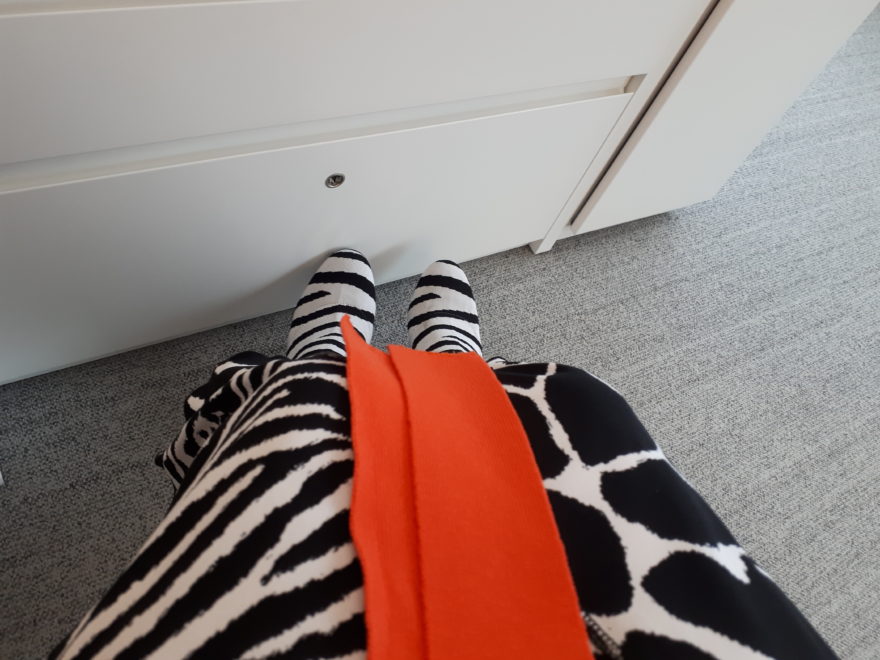You’ll often see a zebra, or a zebra-striped design, featured when rare diseases are mentioned. That’s because of an old axiom, or saying, in medicine:
When you hear hoofbeats, look for horses – not zebras.”
A medical axiom
This saying is meant to teach medical students and new doctors to look for common diseases, even when a patient may have very bizarre symptoms. That, when a clinician is trying to evaluate and diagnose a patient, they shouldn’t even consider rare conditions; the ‘zebras’.
Instead, this medical axiom goes, the doctors should eliminate and test for non-rare conditions; the ‘horses’. This has also been taken to mean that a rare disease should only be considered after all possible common illnesses have been tested for – and ruled out.
This, of course, takes time. Lots of time. There are many common diseases to be ruled out, using this approach. So when a patient does have a rare disease, ‘looking for horses’ will cause delays in their diagnosis.
That delay in diagnosis means that appropriate treatment is also delayed, for these not-yet-diagnosed rare disease patients. During this ‘looking for a horse’ delay, the patient’s condition can deteriorate; their disease or symptoms can deteriorate.
Patients frequently describe a long and protracted ‘diagnostic odyssey’, taking years, or even decades.
These years can be defined by uncertainty, multiple hospital attendances, investigations, misdiagnoses, and inappropriate treatments; with huge emotional cost and wasted time, effort and resources”(2)
So a few years back, people with rare conditions started calling themselves ‘zebras’. It’s a reminder to everyone working in healthcare that the sound of hoof beats can sometimes be coming from zebras.
For me, as a new rare disease patient in mid-2016, the zebra was also a symbol of community. Over 7,000 rare diseases have been identified so far, and the zebra unites patients with these conditions – across diseases. Across borders, continents.
Rare disease patients often face similar challenges, despite differences in our diseases’ etiologies, outcomes, progressions, signs, and symptoms.
International Rare Disease Day is on February 28th, so a while back I bought a partially zebra-printed skirt to wear for the occasion. I also wore it for CRPS Awareness Day on November 5th.
Then I ‘wore my zebra’ a few times during the rest of November, for CRPS Awareness Month. I’d have worn it every day that month, but that would’ve seemed very strange as I work at the same office every day!
Today I went out at lunchtime with a friend and colleague. There was a big sale at a shoe store near our office, so we headed there.
When we walked in, these zebra boots jumped right up and started following me around the store. Yeah, you’re right, that last bit is fiction. But I did instantly fall in love with these zebra ‘hoofs’!
Today I wore them to work, and paired them with my zebra-printed skirt. Then I added an orange sweater; the colour of CRPS. Flame orange, because CRPS often feels as though part of your body is on fire.
Guess what? These zebra ‘hoofs’ have already helped me raise awareness of my disease, at my office, with almost ten people – and it’s only lunchtime!
References
(1) Michael Aaronson, MD. Common things are common, except when the diagnosis is rare. KevinMd.com blog. 07 Jan 2011. Accessed 29 Nov 2018. Web:
http://www.kevinmd.com/blog/2011/01/common-common-diagnosis-rare.html
(2) William RH Evans, and Imran Rafi. Rare diseases in general practice: Recognising the zebras among the horses. The British Journal of General Practice: The journal of the Royal College of General Practitioners. Vol. 66,652 (2016): 550-551. doi:10.3399/bjgp16X687625. Accessed 29 Nov 2018. Web:
https://bjgp.org/content/66/652/550

